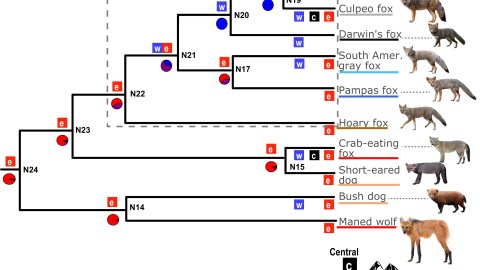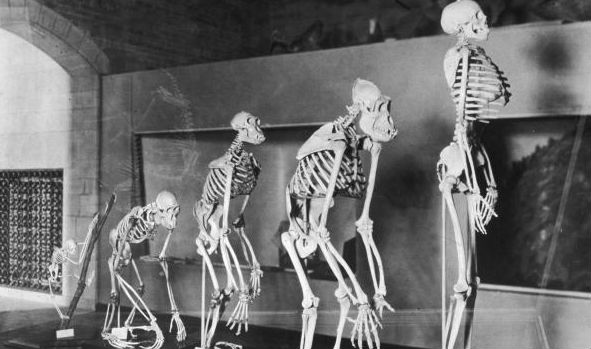- Charles Darwin used the Galapagos finches as evidence for his theory of evolution by natural selection, but he also could have cited the remarkable diversity of South America’s “foxes” as evidence.
- Darwin originally documented the fox-like animals scientifically in 1834, even before he visited the Galapagos, but he did not explore far enough into South America to observe their numerous evolved forms.
- South America’s foxes evolved from a single North American ancestor 3.9 to 3.5 million years ago, which migrated to South America via the Isthmus of Panama. There are now ten wildly different fox-like species today, each evolved to fit its ecological niche.
South America’s “foxes” are the most diverse collection of canids on the planet, and they were initially documented scientifically by none other than legendary naturalist Charles Darwin.
In 1835, during the now famous voyage of the HMS Beagle, Darwin discovered a great many finches on the Galapagos Islands, all varying in form and behavior. He later cited the diversity of their beaks as evidence for his theory of evolution by natural selection.
But just a year before, he missed an arguably cooler example of evolution on Isla San Pedro off the coast of Chile. Stepping foot on the cool, forested island, he immediately noticed a curious fox-like animal. Darwin being Darwin, he snuck behind the distracted creature and cracked it on the head with his geology hammer. He eventually took the deceased specimen back to England and donated it to the Zoological Society of London.
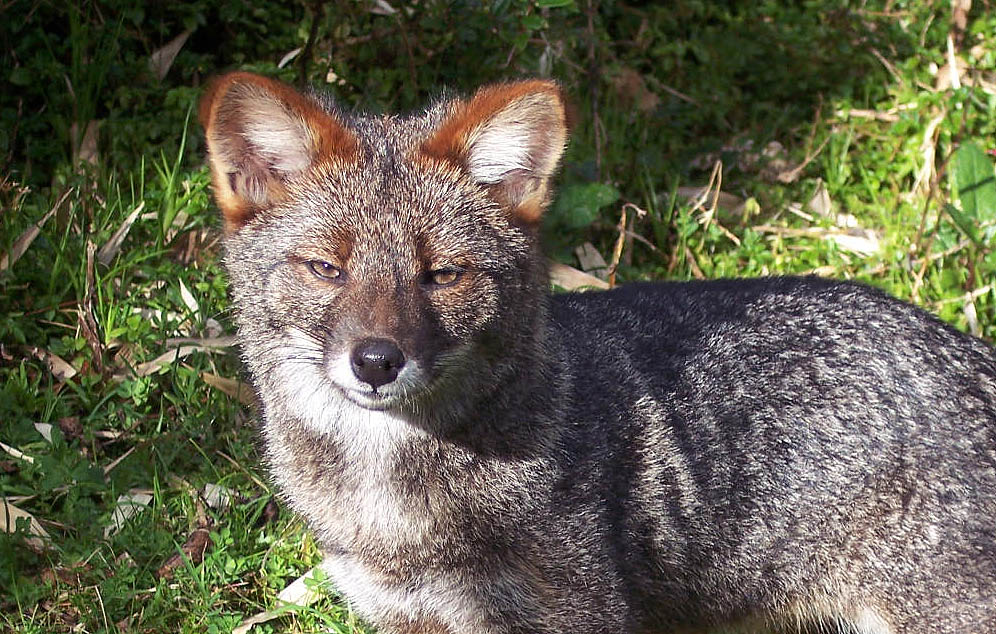
The species, Lycalopex fulvipes, is now colloquially known as Darwin’s fox. The animal was a noteworthy addition to his collection, but if the naturalist had done a little more foraying throughout South America (an admittedly taller task than his subsequent explorations in the Galapagos), he would have realized that the canid is part of a unique subtribe of fox-like species. The species constitutes a remarkable example of adaptive radiation, the process by which organisms diversify rapidly from an ancestral species into a multitude of new forms.
South America’s foxes
As Kallie Moore, a fossil librarian at the University of Montana, shared on the PBS show Eons, the incredible evolutionary story of South America’s foxes is, “One driven by great migrations, insurmountable geological barriers, and new ecological opportunities.” She added, “These canids were, in a sense, the finches that Darwin missed.”
Analyzing the genomes of all ten living species of South America’s foxes (which, technically are fox-like and not “true foxes”), a large team of researchers found that the animals all hailed from a single ancestor that lived 3.9 to 3.5 million years ago. As the scientists detailed in their study published in fall 2022, they were even able to trace the animal’s origins to North America and estimate its original population size, about 11,600 individuals. These critters made their way to South America after the narrow Isthmus of Panama emerged from the sea.

“On reaching South America, the canids encountered a vast and diverse landscape with few obligate carnivores,” the researchers wrote. They spread into numerous ecological niches, separated and shaped by the magnificent Andes Mountains, and over millions of years evolved into the various, wonderful “foxes” we see today.
There’s the short and stubby bush dog, which, despite its diminutive stature, is a hypercarnivore, primarily eating rodents but occasionally teaming up to take down wild pigs and rheas (South American ostriches).

There’s the extremely long-legged maned wolf, which walks through its tall grassland habitat with a signature gait. Most fascinating, it consumes fruit as a large portion of its diet — the only large canid to do so — preferring the aptly named tomato-like “wolf apple.”
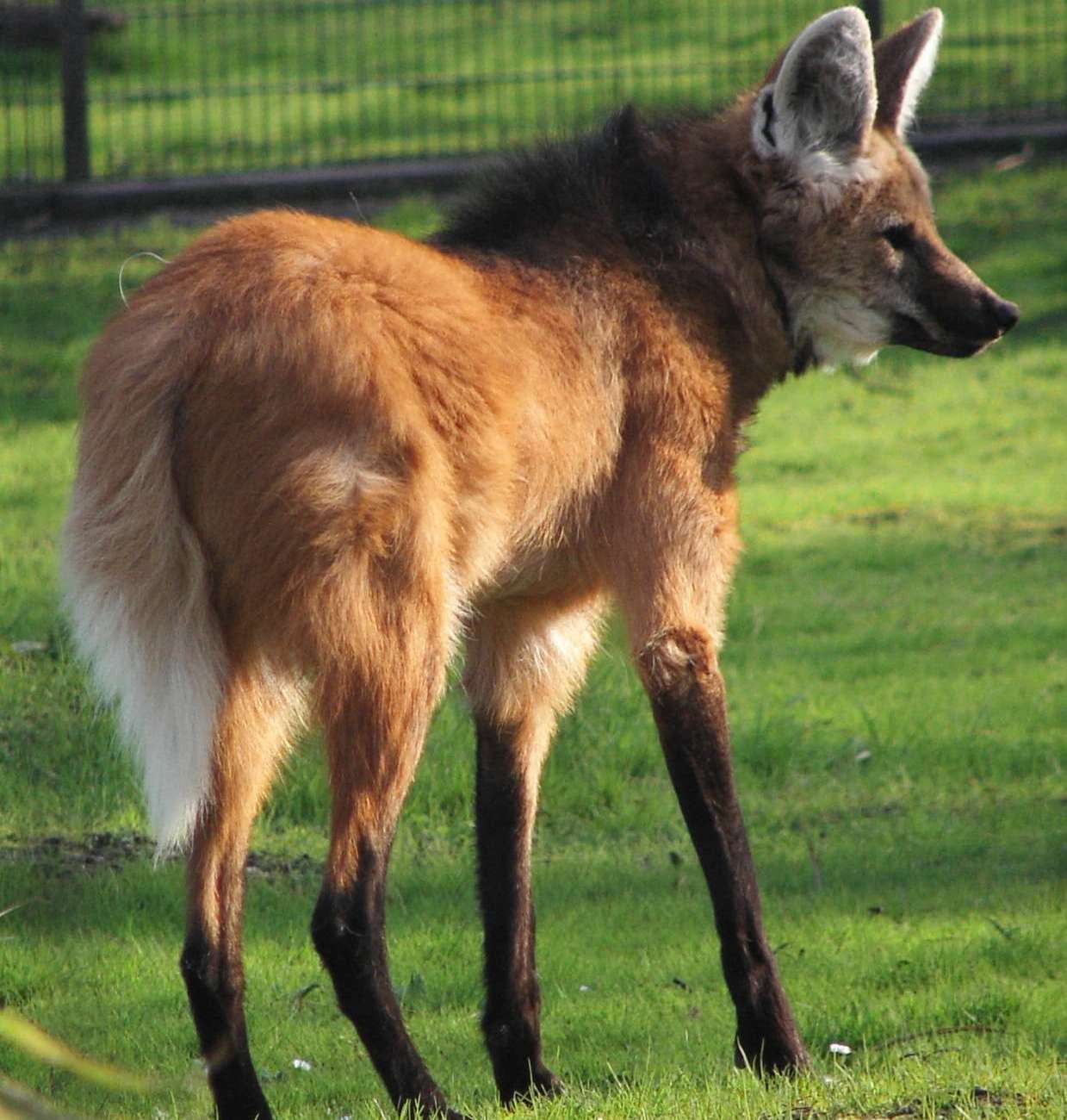
And there’s the almost pig-looking short-eared dog, with short, sleek fur and partly-webbed paws that are suitable for its primarily aquatic habitat.
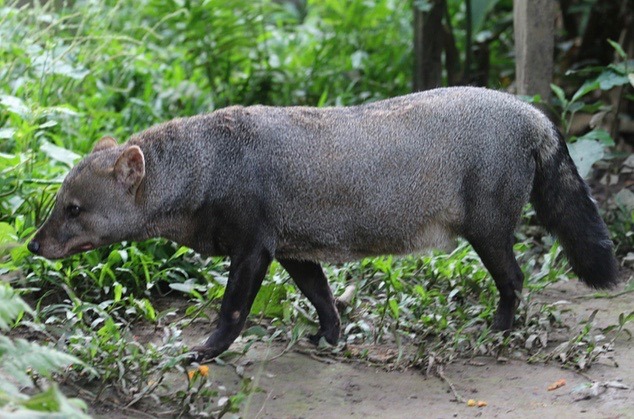
The seven other South American foxes like the crab-eating fox, the hoary fox, the Sechuran fox, and yes, Darwin’s fox, all sport other unique, evolved adaptations to their respective habitats, showcasing the “endless forms most beautiful and most wonderful” that Darwin wrote of decades later in his groundbreaking book On the Origin of Species by Means of Natural Selection.
